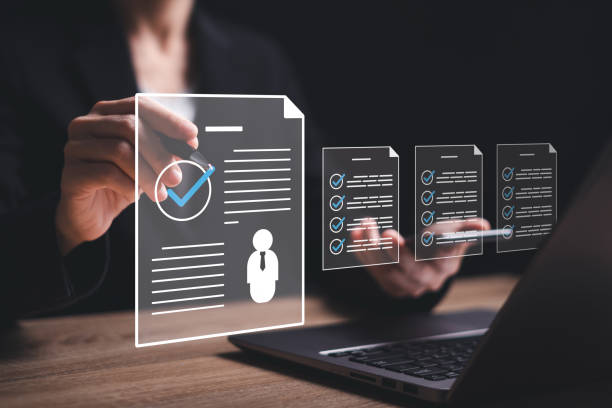Introduction to On-page SEO and its Importance
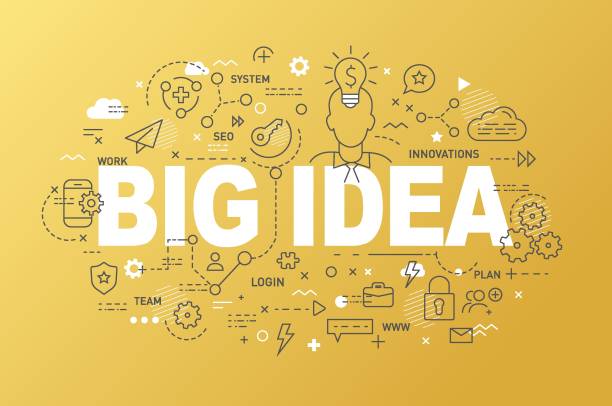
In today’s competitive internet world, a strong online presence and visibility for search engines are vital.
One of the most important factors in this regard is #on_page_SEO or #on_site_optimization.
This process includes a set of actions performed within your website to improve its position in search results.
The main goal of on-page SEO is to help search engines better understand your page content and also to provide a better user experience to visitors.
This aspect of SEO, unlike off-page SEO which deals with backlinks and off-site activities, is entirely under your control and you can directly influence it.
The importance of on-page SEO lies in establishing a solid foundation for any successful SEO strategy. Without a strong on-page SEO foundation, even the best off-page SEO strategies cannot yield desired results.
Simply put, on-page SEO is like the skeleton of a building; if the skeleton is not strong, the building will never have the necessary stability.
In this section, we discussed the fundamentals of on-page SEO, and in subsequent sections, we will delve into its details more specifically.
Did you know that your website is your customers’ first impression of your company? Multiply your business’s credibility with a powerful corporate website from Rasavab!
✅ Exclusive and eye-catching design tailored to your brand
✅ Improved user experience and increased customer acquisition
⚡ Get free consultation!
The Key Role of On-page SEO in Ranking Improvement
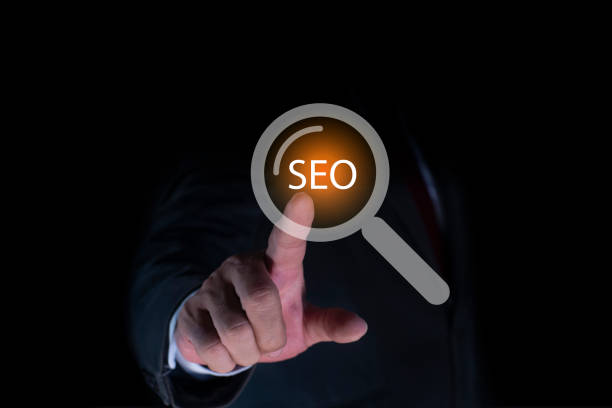
To fully understand the impact of on-page SEO, we must first grasp how search engines work.
Search engines use crawlers to scan and understand the content of web pages.
On-page SEO helps these robots more efficiently identify site structure, main content topics, and inter-page connections.
Strong on-page SEO sends positive signals to search engines that your site is authoritative, organized, and relevant to user searches.
These signals include proper use of keywords, appropriate URL structure, optimized title tags and meta descriptions, high loading speed, and logical internal linking.
Each of these factors, directly or indirectly, affects your site’s ranking in Search Engine Results Pages (SERP).
For example, analytical and comprehensive content that answers user questions not only improves user experience but also has a higher chance of ranking for long-tail keywords.
Neglecting these aspects can lead to reduced crawlability, incorrect page indexing, and ultimately, poor ranking.
This analytical section shows us how each component of on-page SEO completes the success puzzle and why investing time and resources in on-page SEO is a necessity, not an option.
Keyword and Content Optimization in On-page SEO

Content is king, and keywords are its crown.
Content and keyword optimization are among the main pillars of on-page SEO.
This process begins with comprehensive keyword research.
You need to identify the words your target audience searches for to find your products or services.
Once identified, these keywords should be naturally and logically incorporated into your content.
This includes using keywords in the article title (H1), subheadings (H2, H3), main body text, and even in image alt attributes (alt text).
However, simply repeating keywords is not enough; the content must be valuable, unique, and comprehensive.
Specialized content that delves deep into a topic and fully answers user questions is not only highly regarded by search engines but also builds user trust and satisfaction.
Content quality takes precedence over quantity in every aspect. In this guidance and educational section, we point out key tips for producing optimized content for on-page SEO.
One should also not neglect appropriate keyword density (not excessive) and the use of synonymous keywords (LSI).
This approach helps search engines better understand the context and overall meaning of your page, not just individual words.
Adhering to these principles is the foundation of successful on-page SEO.
| On-page SEO Element | Description | Impact on Ranking |
|---|---|---|
| Title Tag | The most important element for search engines and users to understand the page topic | Very high impact: Main factor in Click-Through Rate (CTR) and content understanding |
| Meta Description | A brief summary of the page content displayed in search results | Medium impact: Improves CTR, no direct impact on ranking |
| Headings (H1, H2, H3…) | Organizing content and specifying the importance of different sections | High impact: Improves readability and page structure understanding for search engines and users |
| Keyword Density | The frequency of keyword repetition in the text relative to the total word count | Medium impact: Natural usage to prevent spam |
| Image Optimization (Alt Text) | Alternative text for images that helps search engines understand visual content | Low to medium impact: Improves image SEO and accessibility |
URL Structure and Site Information Architecture
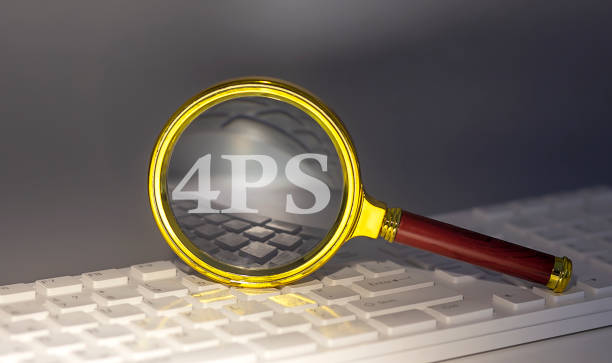
URL structure and overall site architecture are important aspects of on-page SEO that are often overlooked.
A good URL should be short, descriptive, and include relevant keywords.
Clean and understandable URLs not only help search engines understand page content but also improve user experience.
Site information architecture refers to how pages and content are organized within your site.
A logical hierarchical structure, with clear categories and related subcategories, helps search engine robots more effectively crawl your site and index its content.
This optimization in on-page SEO is crucial to ensure that no important page remains hidden from robots.
The use of strong and consistent internal linking is also part of this architecture.
For example, a parent page should link to relevant child pages and vice versa.
This not only distributes SEO value (Link Equity) throughout the site but also helps users easily navigate your site.
This guidance and explanatory section emphasizes the importance of a strong structure, which is the foundation of sustainable on-page SEO and signals to search engines that your site is organized and authoritative.
Did you know that a weak corporate website costs you many opportunities daily? Solve this problem forever with professional corporate website design by Rasavab!
✅ Create a powerful and reliable image of your brand
✅ Targeted acquisition of new customers and increased sales
⚡ [Get free website design consultation]
The Importance of Title Tags and Meta Descriptions in On-page SEO
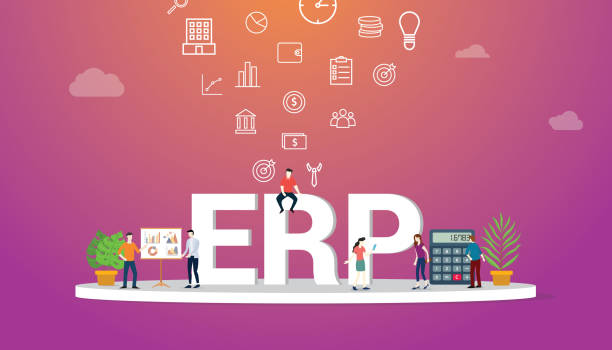
Title Tags and Meta Descriptions are two vital elements in on-page SEO that directly impact your Click-Through Rate (CTR) in search results.
The title tag is the most important HTML tag for SEO and should include the page’s main keyword, be engaging and concise, and be between 50 and 60 characters (or pixels).
This tag is the first thing users see in search results and tells search engines what your page is about.
The meta description is also a brief, engaging summary of the page content that appears below the title in search results.
Although meta descriptions do not directly affect ranking, they play a very important role in encouraging users to click on your link.
A good meta description should include the keyword, a Call-to-Action, and be engaging. This educational section emphasizes the importance of writing unique and engaging title tags and meta descriptions for each page.
Avoid repeating the same title and descriptions for different pages, as this can harm your on-page SEO credibility and confuse search engines.
Optimizing these elements not only helps search engines better understand your content but also makes your link stand out among competitors.
Loading Speed and User Experience (UX) in On-page SEO
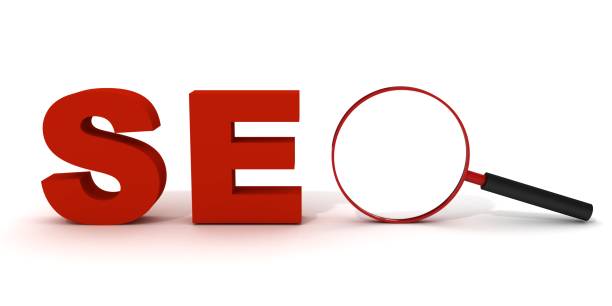
In the digital age, speed is paramount.
Page loading speed is one of the most important ranking factors for search engines, especially Google.
Slow pages not only create a poor user experience but also lead to an increased Bounce Rate and reduced user’s time on site.
These signals tell search engines that users are not satisfied with your site, which ultimately leads to a lower ranking.
Image optimization, code compression (CSS, JavaScript, HTML), using browser caching, and choosing appropriate hosting are among the essential actions to improve site speed.
In addition to speed, user experience (UX) also plays a pivotal role in on-page SEO.
A website with a Responsive Design that displays well on different devices, easy navigation, and readable and engaging content encourages users to stay and explore more.
This analytical section shows us how a fast and user-friendly site not only satisfies users but also sends consistent positive signals to search engines that are crucial for on-page SEO.
From an on-page SEO perspective, speed and UX are inseparable, and a successful strategy must consider both.
Internal Linking Strategies and Their Impact
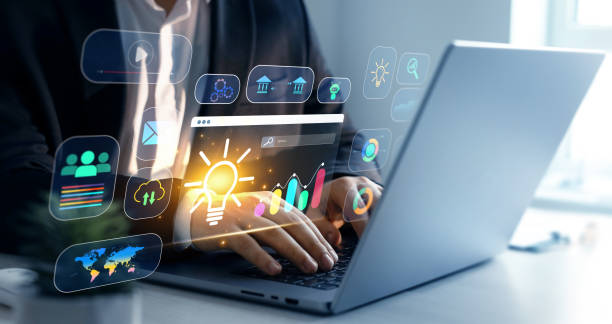
Internal Linking is one of your strongest tools in on-page SEO that helps you distribute the flow of authority and power (Link Equity) throughout your website.
Internal links show thematic connections between different pages of your site and help search engines understand the structure and hierarchy of your content.
These links not only allow search engine crawlers to easily discover and index new pages but also help users access relevant and deeper information.
Using descriptive and relevant Anchor Texts, which include the target page’s keywords, is of high importance.
For example, if you are writing about “website speed optimization,” you can link to a more comprehensive article about “website speed improvement tools” using that exact phrase as anchor text.
This specialized and guiding section demonstrates the importance of a solid internal linking strategy.
By linking from high-authority pages to more important and lower-authority pages, you can spread SEO value throughout your site and help more important pages achieve better rankings.
This is an inseparable element of on-page SEO that directly affects the authority and visibility of your pages.
| Benefit | Description | Impact on SEO |
|---|---|---|
| Improved Crawlability | Helps search engine robots discover and index all pages | Very high: Ensures all content is seen |
| Page Authority Distribution (Link Equity) | Passing authority and power from stronger pages to weaker pages | High: Improves ranking of target pages |
| Increased User Experience (UX) | Providing easy navigation paths and access to relevant content for users | Medium: Reduces bounce rate, increases dwell time |
| Reduced Bounce Rate | Encouraging users to visit more pages on your site | Medium: Positive signal to search engines |
| Strengthening Thematic Connections | Showing semantic connections between pages to search engines | High: Helps understand the thematic depth of the site |
Optimizing Images and Multimedia Files
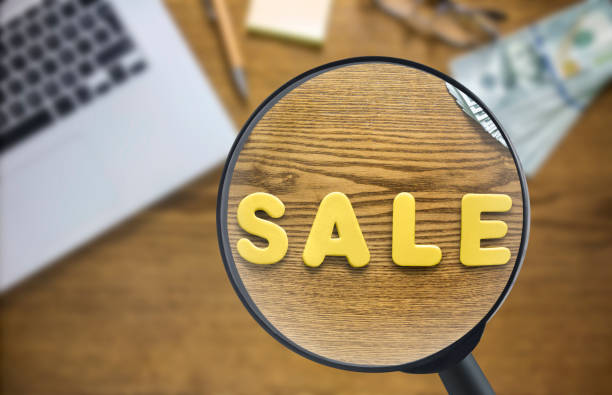
Visual content plays an important role in attracting users and improving their experience, but without proper optimization, it can harm site loading speed and ultimately on-page SEO.
Optimizing images and multimedia files involves several steps.
First, compressing images without reducing their quality is essential to reduce file size and increase page loading speed.
Many tools are available for this.
Second, using the alt text attribute (alternative text) for images.
This descriptive text helps search engines understand the image content, as they cannot “see” images like humans.
Also, alt text is useful for visually impaired users and if the image fails to load.
This attribute should include a keyword relevant to the image and the page.
Third, using descriptive file names for images and videos (instead of “image1.jpg,” use “seo-internal-optimization.jpg”).
This explanatory and guiding section shows how optimizing multimedia content can significantly contribute to your on-page SEO.
Additionally, for videos, optimizing the title, description, and using Schema Markup can help them appear in video search results.
By observing these tips, your site will not only load faster but also rank better in image search results.
Are you tired of your e-commerce website not generating as much revenue as it could? Rasavab, an expert in professional e-commerce website design, solves this problem permanently!
✅ Increased sales rate and revenue
✅ High loading speed and unparalleled user experience
⚡ Get free e-commerce website design consultation
Creating Engaging and Thought-Provoking Content for On-page SEO
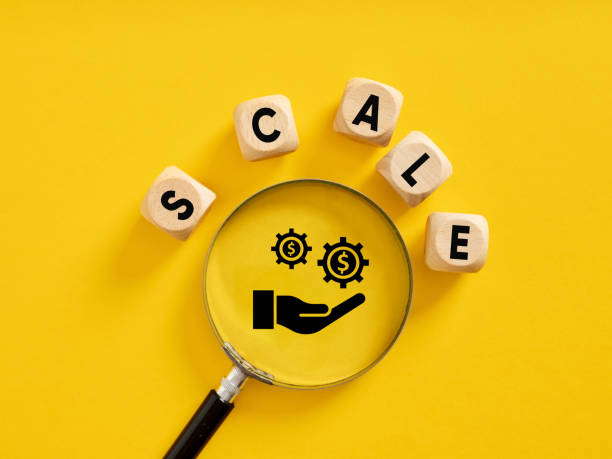
Alongside all technical aspects of on-page SEO, the importance of engaging and captivating content should not be overlooked.
Thought-provoking content not only sparks user curiosity but also encourages them to interact more with your site.
This type of content can include Q&A, challenges, success stories, or even surprising statistics.
The goal is to create content that not only provides information but also engages the user’s mind and makes them think.
This entertaining approach indirectly affects on-page SEO, as it increases the user’s time on site (Dwell Time) and reduces the bounce rate.
Search engines, especially Google, attach great importance to these positive user experience signals and consider them an indicator of content quality and relevance to the user’s search.
Content that encourages users to discuss and exchange ideas (in the comments section or on social networks) can also lead to more new user-generated content, which is an SEO advantage in itself.
Creating specialized content that answers complex user ambiguities and questions helps you be recognized as an authority in your field.
This section on engaging content shows how creativity in content can complement your technical on-page SEO strategies.
Monitoring and Essential Tools for On-page SEO

After implementing on-page SEO strategies, the next crucial step is monitoring and analyzing performance.
SEO is an ongoing process, and to maintain and improve rankings, you need continuous monitoring and periodic optimizations.
Various tools are available to help you in this area.
Google Search Console is a free and essential tool provided by Google itself, offering valuable information on how your site is seen by Google, crawl errors, keywords you rank for, and internal and external links.
Google Analytics is also vital for tracking site traffic, user behavior, bounce rate, and conversions.
Paid tools like Ahrefs, Semrush, and Moz also offer more advanced analytical and competitive features.
This news and specialized section emphasizes the importance of using data for informed decision-making.
By regularly reviewing this data, you can identify your on-page SEO weaknesses and take necessary steps to improve them.
For example, if you notice that a specific page has a high bounce rate, it might indicate a need to improve the content, loading speed, or user experience of that page.
Regular monitoring allows you to quickly react to changes in search engine algorithms and keep your on-page SEO strategy up-to-date.
Frequently Asked Questions
| Question | Answer |
|---|---|
| What is On-page SEO? | On-page SEO refers to a set of actions performed within your website to improve its ranking in search engine results. This includes optimizing content, site structure, and HTML code. |
| Why is On-page SEO important? | On-page SEO helps search engines understand your page content and determine if your content is relevant to searchers. It is the foundation of any successful SEO strategy. |
| What are the key elements of On-page SEO? | Page title (Title Tag), meta description (Meta Description), keyword usage, image optimization, heading structure (H1, H2, …), internal linking, and content quality are key elements. |
| How to optimize the Title Tag? | The page title should include the main keyword, be engaging and compelling for clicks, and have a length of 50 to 60 characters (or appropriate pixels) to be fully displayed in search results. |
| What role does Meta Description play in On-page SEO? | The meta description is a summary of the page content that appears below the title in search results. Although it does not directly affect ranking, it helps SEO by increasing the Click-Through Rate (CTR). |
| What is the importance of using heading structure (H1, H2, H3) in On-page SEO? | Headings structure the page content and make it easier to read. H1 is usually the main title of the page and should include the keyword. H2 and H3 are used to organize sub-sections and help search engines understand the content hierarchy. |
| How to effectively use keywords in content? | Keywords should be used naturally and logically throughout the content, including the introduction, body, and conclusion. Avoid keyword stuffing. |
| What steps are involved in optimizing images for On-page SEO? | It includes compressing images to reduce file size, using descriptive file names, adding appropriate alternative text (Alt Text), and optimizing the image title and description. Alt Text is crucial for accessibility and helping search engines understand image content. |
| What is Internal Linking and what are its benefits? | Internal linking means creating links from one page on your website to another page on the same website. This helps users easily navigate your site, distributes page authority throughout the site, and helps search engines better understand your site’s structure. |
| What is the importance of content quality in On-page SEO? | High-quality, accurate, comprehensive, and valuable content for users is the cornerstone of on-page SEO. Search engines prefer content that meets user needs. Quality content leads to longer user dwell time and reduced bounce rate, which are positive SEO signals. |
And other advertising agency services by Rasavab in advertising
Smart Social Media: Professional optimization for digital branding using key page optimization.
Smart UI/UX: A creative platform for improving campaign management with precise audience targeting.
Smart SEO: A dedicated service for improving SEO ranking growth based on intelligent data analysis.
Smart Marketplace: Revolutionize sales growth by customizing user experience.
Smart Advertising Campaign: An innovative service for increasing website traffic through key page optimization.
And over hundreds of other services in internet advertising, advertising consultation, and organizational solutions
Internet Advertising | Advertising Strategy | Sponsored Content
Resources
What is On-page SEO? A Complete GuideComplete Guide to On-page SEOOn-page SEO Checklist for Your WebsiteComprehensive Guide to On-page SEO at SEO Moz Iran
? To elevate your business in the digital space and reach the pinnacles of success, experience custom website design and comprehensive digital marketing services with Rasavab Afarin.
📍 Tehran, Mirdamad Street, next to Bank Markazi, Southern Kazeroon Alley, Ramin Alley No. 6



